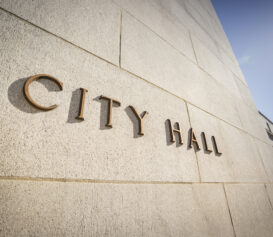We’re back with the latest updates from NYC’s City Council, and what’s been proposed that could impact property owners and managers. Here’s what you need to know:
New Risk-Based Inspection Program
The proposed law that’s getting the most buzz is the new risk-based inspection program:
The commissioner shall establish a risk-based inspection program to identify structurally hazardous buildings. The risk-based inspection program shall use a model weighing factors to predict the likelihood of a structural failure. The model shall assign a risk score indicating the likelihood of a structural failure to each building analyzed through the model, and the department shall conduct structural inspections on buildings receiving above a threshold score, as determined by rule of the commissioner
This proposal came about after the partial building collapse last year in the Bronx, in an effort to prevent similar structural issues going forward.
The new program would compile building data, historical information, and more, all to amount to a specific score that predicts the likelihood of structural failure. The DOB would then set a score threshold, and inspect buildings that fall within a specific score set.
Information that would be assessed as part of the score model would include (but not be limited to):
-
- Building data, including the building’s age, occupancy type, ownership type, construction material, number of floors from the ground level, number of public-facing exposures, and number of inhabitants;
- Permit history and the date of the most recent alteration;
- Violation history;
- Current and prior critical examination reports;
- Qualified exterior wall inspector certification history;
- Prior maintenance records;
- Number of 311 complaints; and,
- Any other factors set by rule of the commissioner.
Program-Related Violations
If violations for unsafe conditions are issued as a result of the inspection, owners would be required to submit a corrective action plan within 10 days. It must be signed and sealed by a registered design professional, and outline plans to remedy each structural defect, including timeframes. The DOB would conduct follow-up inspections every 60 days to verify progress. Owners would also be responsible for distributing corrective action plans to building inhabitants, available in all designated citywide languages.
Immediately hazardous violations must be corrected “forthwith” – that is, immediately. Major or lesser violations must be corrected within 30 days of issuance. The commissioner can also set and impose escalating civil penalties for failure to correct any violations issued as a result of the program. Separately, if there are uncorrected violations from these inspections, the commissioner would also not issue any non-emergency work permits to the building, with no more than two waivers allowed per building.
What’s Next?
The proposed law is set for a Council introduction on May 16th, at the next full council meeting. While the bill is set to go into effect “immediately” if it passes, there are some clarifications needed from the DOB regarding scoring thresholds and processes. We’ll keep you posted on any changes and movement here.
More Parking Structure Updates
We’re into the second subcycle of the first required filing period for parking structures (and nearing the date for special initial observations), and there’s a swath of new potential requirements proposed by the council. Here’s a brief look at what could be coming:
- A study on structural loadbearing capacity – The DOB would be required to conduct a loadbearing study and assess various factors (size, age, materials, and structural design of the parking structure), along with any resulting recommendations
- A weight requirement for garages – Maximum permissible weight for structure levels would be monitored by a weigh station so entering vehicles could be weighed before they were allowed to park.
- Doubling penalties and daily civil penalties for parking structures – Standard civil penalties would be doubled for DOB violations issued to parking structures, and daily penalties would be enforced for failure to maintain parking structures.
- Boilerplate annual inspection checklists for parking structures – Now, owners must have an expert create their annual observation checklist as part of their first filed inspection. This proposal would have the DOB create and publish a boilerplate checklist that could be used prior to the annual condition inspection.
- Increasing the required inspection schedule/cycle – Instead of the current 6-year inspection cycle, inspections would be required on a 4-year cycle starting in 2028
All the above proposals are currently in committee – we’ll let you know if any progress to the full council.
Other Noteworthy Proposals
Other proposed laws include another requirement for photographs of DSNY violations, registration statements, required soil inspections for multiple dwellings, and asbestos surveying and abatement following a “catastrophic event.”
As always, we’ll keep you posted next month when a few of these may make it out of committee – or older ones may pop up.




